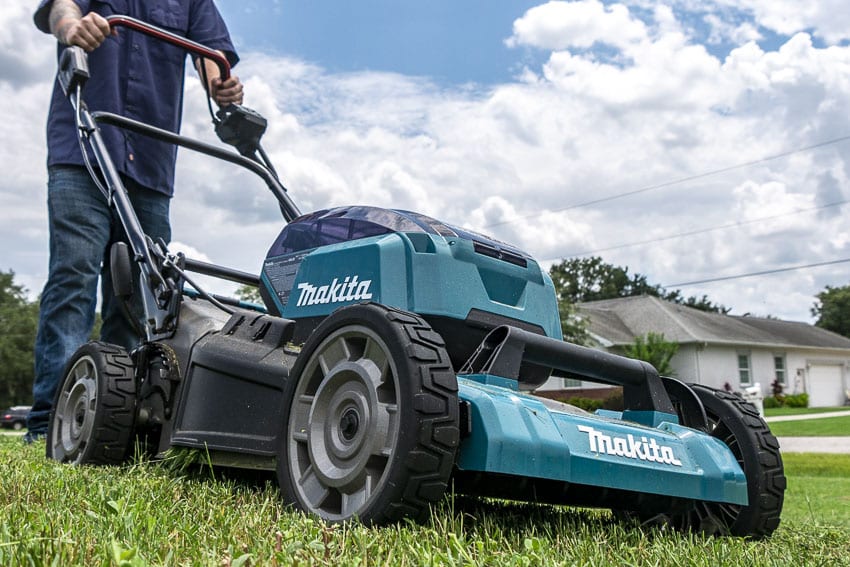The Future of Outdoor Power Equipment Looks Quiet and With Fewer Emissions
We jumped on the horn with a team of experts from Makita to talk about the future of outdoor power equipment. Why Makita? They’re one of the leaders in cordless technology with more than 40 years of cordless tool expertise, but they go much deeper than that.
They’re not just a power tool company that has an OPE line. Makita has an impressive breadth of products and competencies that bracket the needs of nearly every user from homeowners to professional lawn care crews. With battery, gas (including 4-stroke), and corded products available, Makita can go toe-to-toe with the biggest names in the outdoor power equipment industry—and come out ahead.
We’ve collected the best parts of that conversation to share with you what Makita sees in the future of OPE
The Case for Battery-Powered OPE
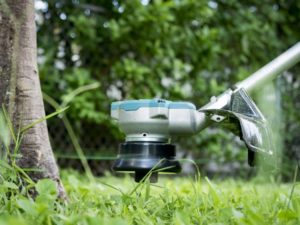
In the gas vs battery debate, the many benefits of cordless OPE are no secret. In Europe and the US West Coast, communities want the lower noise and emissions that battery-powered products offer. Some local municipalities are writing ordinances, while HOAs and universities are beginning to require it on their properties.
As a response, more and more landscaping companies are offering cordless lawn care as part of their business plan. They’re also looking at the cordless trend and trying to get ahead of the curve.
As just one example, California is considering legislation that would eliminate gas OPE products by 2025 in the entire state.
The way Makita looks at cordless OPE fits in with this trend. Rather than comparing how their cordless products compare to other brands, they test it against gas products to move toward full gas replacements. They’re constantly striving for products that truly compete with gas.
Of course, there are other benefits of cordless as well. No winterizing and no gummed-up carbs are just a couple. Just pop a charged battery (or two) in your equipment and get to work!
Sluggish Adoption – The Issue of Too Little Noise
Tradesmen really started the cordless transition. Even masonry is on board now. Makita made the jump with AVT (Anti-Vibration Technology), although it wasn’t a quick adoption. The technology made Pros working with concrete feel like the tool wasn’t hitting as hard when in fact, they just weren’t feeling the effects of the impact energy in their arms like they were used to.
As the construction industry moves from simple cordless drills to cordless rotary hammers, chop saws, and more, it’s primarily framers that are still holding out.
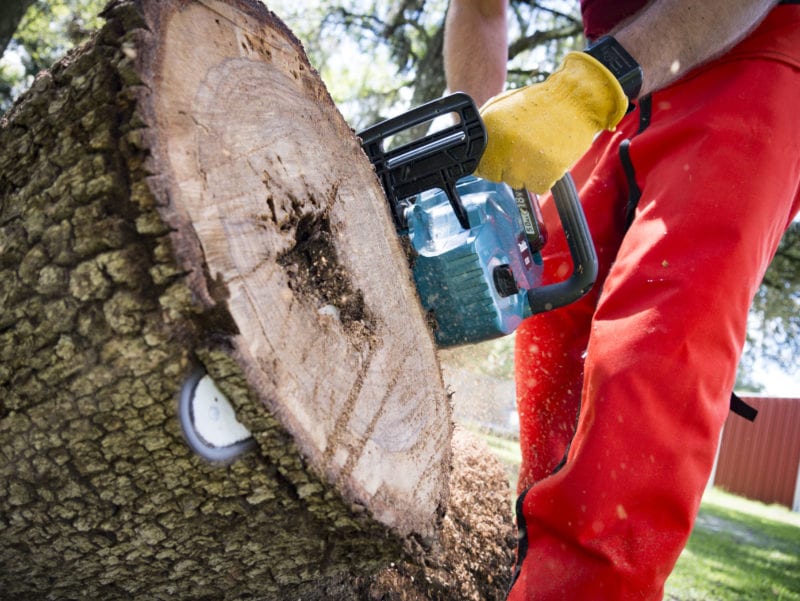
OPE may be suffering from a similar hesitation as masons. Cordless chainsaws, string trimmers, and blowers don’t sound as powerful as gas-powered ones. When the noise level doesn’t match what Pros are used to, it may cause them to think there’s less power.
The challenge is convincing them that power and sound aren’t directly related to each other.
Future of Outdoor Power Equipment is Runtime
Runtime is another concern for the future of outdoor power equipment. Ideally, you don’t want to stop to recharge and that means having enough battery capacity to make it through the day. That’s a lofty goal and great when you can hit it. Keep in mind that you’re already stopping to refuel on larger properties. Swapping batteries is even faster. If you can get runtime that’s close to how long a tank of gas lasts, that’s a win.
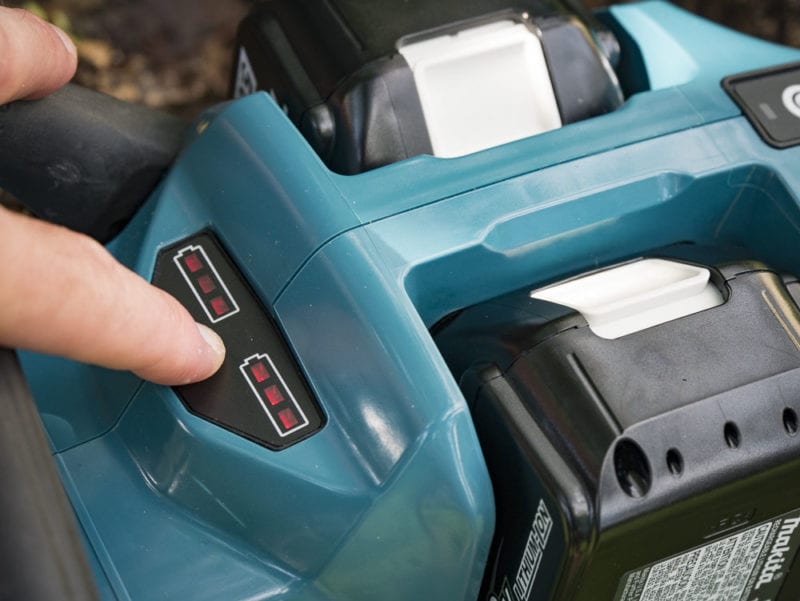
If you’re maintaining a facility or campus, you can go back to the shop and cycle batteries on chargers. Lawn care crews need to have enough batteries with them when they leave for the day.
Future Cost of Outdoor Power Equipment
For both Pros and homeowners, the cost of switching is a major obstacle. However, Makita sees programs coming into play such as SCAQMD. It’s a program for Pro landscapers that allows them to trade in their gas equipment for discounts up to 50% from participating manufacturers. Makita is part of that program and similar opportunities may help usher in battery power as the future of outdoor power equipment.

Under programs like this, homeowners can scrap their gas mowers and get up to $250 off a battery-powered model.
Behavior Modification Required
Even though we can make the case for cordless, there’s still a major hurdle: behavior modification. You simply can’t run cordless tools the same way you run gas.
To get the runtime you need from your batteries, you can’t run your string trimmer at full speed and take the guard off to let two feet of line out. You have to manage the power you have available to let the tool do the work it’s capable of.
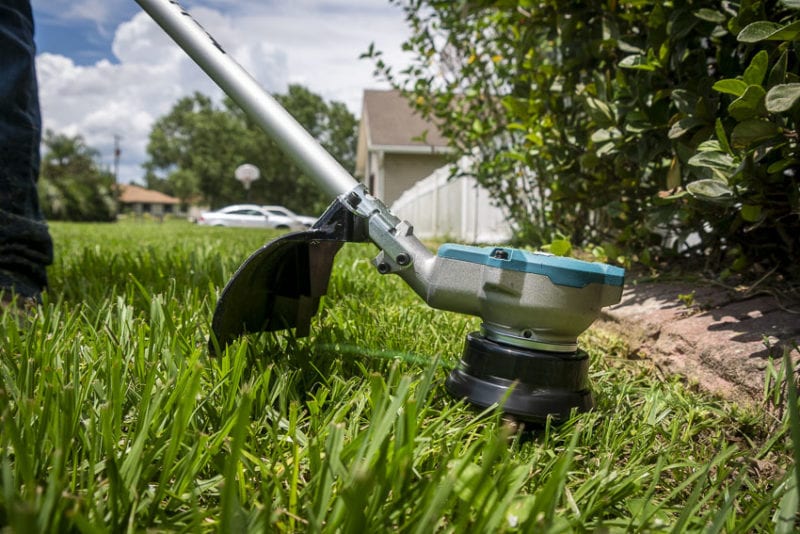
Are there times where you need the absolute most it can give? Definitely. However, you can do the job well with much less most of the time. Once you learn the best practices, you’ll find out just how capable a fully cordless OPE line can be for professional crews.
The (Often) Unnoticed Cost of Gas
We can do the calculations of how long lithium-ion batteries last by counting on replacing them every 3 to 5 years. We can then compare that to the cost of gas, oil, and maintenance on your equipment. But there’s another cost not everyone considers—refueling stops.
We’re not talking about stopping to put more gas in the fuel tank of your string trimmer, we’re talking about filling the mowers and portable tanks at the gas station. Your entire crew is on hold while one of you fills up. In the meantime, you have guys running in to hit the restroom, grab and eat some breakfast, talk to Bob about the weekend fishing trip… You can lose an hour just getting gas if you don’t nip it in the bud.
But what if you didn’t need to stop and could add another property or two to the day? How quickly do those batteries start paying off?
This gives us some food for thought as we consider the future of outdoor power equipment.
Voltage Isn’t Everything
While Makita strives to compare its cordless products to gas equivalents, it’s not as easy when you’re looking at different cordless voltages. It’s easy to compare engine sizes, but voltage isn’t quite as simple.
Even though 36V (40V Max) doesn’t sound as powerful as, say, 54V (60V Max), you can actually get the same amount of power out of both. It’s in the relationship that volts time amp (current) equals watts (power).
Let’s say you need to run a mower at 2000 watts. Both voltages can get there.
36V x 55.6A = 2000W
54V x 37.0A = 2000W
It’s just a matter of compensating by adjusting the amount of current each battery has to deliver.
The relationship holds true for the amount of energy you have at your disposal in the battery(ies). Take a 54V (60V Max), 3.0Ah battery and compare it to a pair of 18V, 5.0Ah batteries in a Makita 18V X2 product.
54V x 3Ah = 162Wh
(18V x 2) x 5Ah = 180Wh
Even though 54V is a significantly higher voltage than 36V, it’s possible to have more available energy in the lower voltage battery. There’s still resistance (Ohm’s law) and other factors in play, but that’s the basic idea.
The Future of Outdoor Power Equipment Looks Cordless
It’s pretty clear that Makita sees the future of OPE as cordless. When will that transition take place? Will lithium-ion batteries still be the go-to power source? Will it be government-regulated or consumer-driven?
We don’t have answers to those questions just yet. However, Makita has some of their top guys and gals keeping an eye on the trends and creating the products to get us there.

